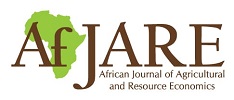Yield advantage and profitability of selected climate-smart technologies: Findings from demonstration plots in Northern Uganda
Moses Okao, Anyoni Godfrey Otim, Gloria Mutonyi, Lawrence Ogwal, Alfred Komakech & Rohit Bharati
Abstract
Climate-smart agriculture (CSA) is viewed as a potentially effective intervention to address low agricultural productivity in Sub-Saharan Africa (SSA), while strengthening farmers’ capacity to adapt to the effects of climate change. We therefore conducted a study to examine maize yield response to three CSA practices – ripping, permanent planting basins and alley cropping. The profitability of their use with and without fertiliser application was also evaluated. It was deduced from the study that ripping, planting basins and alley cropping with Gliricidia (Gliricidia sepium) gave the greatest yield advantage. of 457.1 kg/acre, 456.7 kg/acre and 437.2 kg/acre respectively. Fertiliser application significantly increased the yield advantage, but this increment did not necessarily translate into cost-effectiveness due to the associated costs. In fact, minimum tillage interventions were more profitable without fertiliser application, and at some locations responded poorly to fertiliser application. These variable responses indicate the need for developing site-specific CSA interventions for improved maize productivity and profitability.
